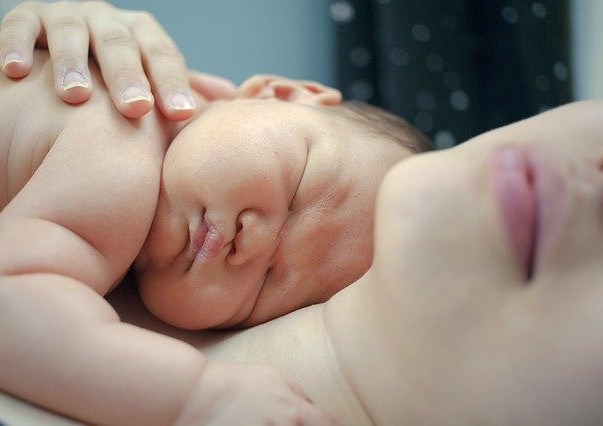
Intense shivering in the late stages of labor or in the immediate postpartum period is one of the unexpected events you may experience in your late labor or early postpartum. You may have been counseled by your healthcare provider or your nurse on the common things you expect to encounter in the postpartum period and this postpartum chills usually is definitely not one of them but then unexpectedly you find your teeth clattering and your body shaking immediately you deliver or some minutes or hours after and you are suddenly filled with dread as to what is happening to me?.
Do not be afraid as this can occasionally happen following delivery and is perfectly non life threatening and resolves quickly.
Postpartum shivering is the development of sudden onset of chills and general body shivering with associated clattering of the teeth some minutes to hours following delivery. It is a perfectly normal physiological response of the body following delivery or in the late stages of labor. It usually occurs within the first two hours of childbirth and can occur in a normal vaginal delivery as well as in a cesarean section delivery.
Causes of Shaking
The cause of postpartum shaking or shivering or postpartum chills as it is variously named is not very clearly understood but it is related to events surrounding the labor and delivery process .
The chills you feel following delivery could be as a result of the hormonal shifts that occur around delivery as the body alters the balance of hormones in favor of postnatal events as compared to retention of pregnancy.
Your fluid shift in labor also can account for the development of the chills and shaking as your body quickly loses the extra fluid gained during pregnancy and in essence more heat is lost with the delivery as the fluid balance shifts to contract the plasma volume.
The strenuous work involved in labor and the forces exerted in delivery can also cause you to develop shivering as the pain you feel during this period can trigger a nervous response that leads to shivering. This can happen especially in the late stages of pushing the baby out as the head presses on the pelvic sympathetic and parasympathetic systems which can result in shivering as your baby pops out.
How to preplan and prevent chills
Postpartum chills is traditionally not one of the things we talk about in our antenatal classes but it can pop up from nowhere and become a real concern for you and being aware of it can go a long way in preparing you psychologically for this uncommon event if and when it does happen .
In as much as you can not prevent it and we do not know antenatally who can develop it, there are certain things you may do to limit your chances of getting the shakes postpartum and enhance your quicker recovery when and if you do have it.
Avoid fluid overload
The more intravenous fluids you receive during labor the more the chances of having the shakes postpartum so reducing the volume of intravenous infusions received can improve the odds against the shakes. As women who underwent cesarean section are exposed to more fluids, they have a higher tendency to develop postpartum shivering than if you had a normal spontaneous vaginal delivery.
Reduce the use of anesthetics
The more analgesics or anesthetics received in labor the greater your chances of having postpartum shakes and this is more especial with anesthesia given to reduce the pain of labor like epidural anesthesia and this is associated with greater and more prolonged shakes.
Overuse of local anesthetics during the repair of episiotomies following delivery can also trigger shakes as a result of the effect of the anesthetic on your system.
Limiting these will lead you to less chance of having shivering postpartum
Prevent prolonged labor
One of the causes of shivering in late labor is the impact of the head of your baby on the pelvic floor as it descends the birth canal in the late stages of labor.
The effort exerted by the mother at pushing the baby out in conjunction with the impact of the baby’s head in the pelvis affects the pelvic plexuses and exerts a nervous system reaction and can help trigger the onset of shivering even before the baby is out and the more prolonged this pushing effort is, the greater the likelihood of shivering developing.
In order to avoid this it is helpful to avoid prolonged labor as a labor that is quick, less painful and effortless will be less likely to be associated with shakes.
Reduce oxytocics use
The use of oxytocics like the drug oxytocin used to induce or augment your labor is associated with more powerful uterine contractions and also has mild vasopressin effect and hence more water retaining capabilities in the system as an anti diuretic hormone effect. The more oxytocin delivered to the system during labor the more forceful labor is and the more intense the likelihood of developing shakes postpartum.
Rethinking Shaking
Postpartum shaking has traditionally being thought of as of not much consequence hence the attitude of healthcare professionals towards it with concurrent dismissal with a wave of the hand as inconsequential and hence we only apply measures to tackle it when it has commenced with the patient filled with dread.
Postpartum shivering should be on the list of topics to be discussed with mothers antenatally. This information should go a long way in eliminating the fear and terror associated with this phenomenon of clattering teeth and generalized tremulousness and shaking associated with it when it does arise as the experience can be quite traumatic to the mother and relations.
Measures to limit its severity and duration by using preventive strategies will also help in eliminating it or lessening the duration and severity
Other Considerations
Breastfeeding and Shaking
If your breast milk enters your blood stream inadvertently, you will experience shivers and shaking as a result of the immune reaction that ensues as a result of this and not because you have an infection or a fever hence breastfeeding is not a cause of postpartum shivering unless the above occurs.
Epidural anesthesia and Shivering
Epidural anesthesia can trigger shivering during labor conducted with its use or in the postpartum after epidural anesthesia. It is a physical reaction to the anesthetic drug administered to you to relieve labor pain.
Management
Postpartum shaking is not a condition you should be worried about so much as it is self limiting even though it is dreadful at the time you are experiencing it.
The symptoms you will experience when you are confronted with this condition comprises tremulousness or shaking of the whole body and feeling of chills even though your temperature check will reveal that you do not have a fever and repeated checks of your body temperature will come up to be absolutely normal.
When you notice that you are shivering and feeling cold, this may also be associated with the observation that even your teeth may be clattering and that you cannot make coherent speech. You should call the attention of your nurse to your side and explain the feelings you are having as clearly as possible. The nurse should try her best to calm you down and explain that this sometimes happens following delivery and should be over in a short while and that you should remain calm and not try to fight the shivering or start stretching to stop it as if you had a surgical delivery, this may be counterproductive.
Your nurse should cover you with warm blankets and should you wish to still hold your baby while the shivering lasts, you can still do so but your nurses or family members should stand by your sides so you don’t unconsciously drop the baby.
The bed rails can also be lifted to add another layer of protection if you are lying down. This should all taper off in about one hour or less and you should be perfectly fine thereafter
Postpartum shivering as already stated should not hamper your ability to cuddle your child. On the contrary, the shivering may actually be soothing to the new born as it gently rocks the baby even though this is at your expense albeit temporarily.
Conclusion
Postpartum shivering is not fever and must be excluded from fever in the postpartum period by an appropriate temperature check.
It is commonly not talked about as it is assumed not to be of much significance but if you have had one I am sure no one will tell you to diminish its importance anymore.
This is common in the postpartum period of both normal and surgically delivered moms and is associated with so much fear and dread and discomfort that to make the postpartum period healthy and replete with freedom much more attention needs to be paid to postpartum shivering in the antenatal and prelabour classes.
Dr Mawa
To your postnatal health and freedom
If you have any comments, suggestions, ideas or experiences you want to share with us concerning postpartum shivering kindly use the comments box below.




Thank you very much for detailing the symptoms and preventions for postpartum shaking. My sister will be in labor soon, so she really needs to manage her health (both physical and mental) to reduce the effect of bad effects that may occur in the postpartum period. By the way, how long normally this will occur, and will it be reduced for the second labor?
Postpartum shaking normally lasts less than an hour in most cases from onset and there is no guarantee for the subsequent labours but being aware of it and its harmlessness is a great psychological boost in managing and coping with it. thank you.
I have two children and I encountered postpartum shaking for both. My mother only told me that it was because of over secretion of breastmilk and I all I need is to breast pump. After about an hour, I was really being relieved.
But this is the first time I have learned of the scientific explanation of its possible causes. And I am glad you shared being a medical practitioner who understand what is happening within a mother’s body. I am more enlightened with its possible causes.
I will no longer give birth, but least I understand better for the time my daughter and daughter-in-law give birth. I can also give caution to their partners on the care of mother and grandchild when it happens.
Thank you for sharing this post.
thank you Rose. i am glad you found the article useful and of great benefit for future use. thank you